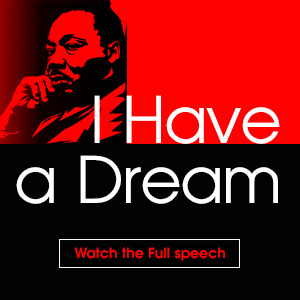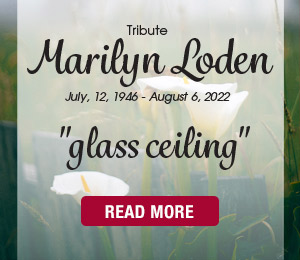By Dr. Thomas J. Bussen

“The only limit to our realization of tomorrow will be our doubts of today.”
– Franklin D. Roosevelti
Think about the future—say, five years from now. Did a tingle of excitement just course through your body, or was it something closer to anxiety, fear, or maybe even dread? As with most cultural dimensions, your answer may vary, depending on where you call home—some societies are made more anxious by the future than others, and thus seek to avoid the risk of uncertainty in their lives. These people are said to have a strong uncertainty avoidance (UA).
A good example for this can be seen in a study done on American, Chinese and Japanese graduate students. The participants in the study were presented with two options. Under the first option, the participants would gain an immediate reward. Under the second option, they could potentially receive a bigger reward, but that larger amount had a payout probability ranging from 5 percent to 95 percent. The participants had to indicate which option they would choose. Rational people of course discount the value of that larger payout as the probability of getting it decreases, but the amount of discounting varies by culture. In this case, Japanese and American students discounted very similarly, whereas the Chinese students showed less discounting, suggesting they were less risk averse.ii
It may be that nature coded some of us to be more risk averse than others. Susan Cain’s research illustrates how a population’s variant risk-seeking and risk-avoidance behaviors can actually benefit a species’ survival. “From fruit flies to house cats to mountain goats, from sunfish to bushbaby primates to Eurasian tit birds, scientists have discovered that approximately 20 percent of the members of many species are “slow to warm”, while the other 80 percent are “fast” types who venture forth boldly without noticing much of what’s going on around them. [Researchers believe] that both types of animals exist because they have radically different survival strategies, each of which pays off differently at different times. … “Shy” animals forage less often and widely for food, conserving energy, sticking to the sidelines, and surviving when predators come calling. Bolder animals sally forth, swallowed regularly by those farther up the food chain but surviving when food is scarce and they need to assume more risk.” iii
A similar survival mechanism may help explain the diversity of risk aversion in human societies. But our level of risk aversion is not just a natural occurrence. Just as animals would over time learn to be more adventurous when food levels fall, and less adventurous when predators rise, so too is our risk aversion likely to be higher where the future is objectively dangerous than in situations where it is safer. It is clear, for example, that a poor farmer has more to fear of the future than a wealthy aristocrat. If the crops were to fail next year, after all, it is the farmer and not the aristocrat who would suffer more.
The best way for the farmer to reduce his exposure to this risky future may be increasing his stockpile of food—by, in short, becoming wealthier. If the best way to do this is to install new machinery, the farmer is likely to be fast to do just that. If the stockpile remains too small for comfort, he may advocate a study of the sciences—perhaps by pushing his child to study in the university or by willingly paying taxes for a stronger educational system. If the farmer is prone to have his food stolen by the aristocrat, then he may call upon the courts to provide greater legal protections.
These actions—the embrace of the rule of law, of technology, and of science—are precisely those taken by many societies that have a strong desire to minimize future uncertainty. Over time, these are likely to make the society quite stable and wealthy, just as the farmer had hoped.iv Thus the descendants of this farmer are unlikely to give much thought to the possibility of a crop failure. The granaries of the local Walmart are full, and they can even afford to enjoy their favorite delicacies at French bistros, Italian joints, and steakhouses. They are more likely to be educated and more likely to be employable in a variety of fields—perhaps even a variety of countries—in the event the proverbial crops fail and one’s immediate employer goes out of business. Their fear of the future, therefore, is much minimized relative to that of their great-great-grandfather. With this greater cushion, they may be willing to take greater risks in their own lives.
If, however, the state is too weak to staff the universities with scientists, to collect taxes for the educational system, and too fractious to impose restrictions on the rogue aristocrat, then the farmer is likely to rely on self-help mechanisms. For instance, he may band together with other precariously situated farmers to uphold justice, and perhaps use this force to steal from others during times of scarcity. In this case, the great-great-grandchildren of this farmer will be in much the same position as their ancestor, and still rather exposed to, and thus concerned about, the future.
This idea that the environment in which we live affects our risk tolerance is more than speculation. Adam Grant, in his work Originals: How Non-Comformists Move the World, noted that researchers Frank Sulloway and Richard Zweigenhaft made a surprising statistical finding involving professional baseball players. As it happens, the most prolific base stealers in history are predominantly younger brothers. They found that younger brothers attempt to steal a base 10.6 times more often than major leaguers who are older brothers, and when the attempt is made, they are 3.2 times more successful.v The correlation was so strong that numerous studies have been extended to determine whether younger children were less risk averse than older siblings, not just on the baseball field, but in all facets of life.
Researchers found that, indeed, younger children are more likely to take risks in their personal and professional lives: they are more likely to go against the status quo as scientists, and more likely to take risks as politicians.vi They are also more likely to use drugs or alcohol, to perform poorly on standardized tests, and to disdain prestigious occupations.vii We would expect that this risk-taking would carry over into the world of business decisions, causing the younger born to be more open to risk. If the statistics on base stealing are any indication, we might expect that these individuals will in fact take better chances than others, if for no other reason than because they have more experience taking risks.
Why would this happen? The reason may be that parents are more likely to coddle younger children, which leads those children to view the world around them as less threatening than older children. This may contribute to positive risk-taking behavior. Less favorably, parents may alternatively pay less attention to younger children, leading to a world view in which there are few consequences for wrongdoing and which may lead to negative risk-taking behavior. Just like the farmer and his descendants, children are an evolving, ever learning product of their environments.
Endnotes
- 56 Motivational and Inspirational Quotes About Success, BRAIN TRACY INT’L (last accessed July 29, 2018) https://www.briantracy.com/blog/personal-success/26-motivational-quotes-for-success/.
- Wanjiang Du, Leonard Green & Joel Meyerson, Cross-Cultural Comparison Of Discounting Delayed And Probabilistic Rewards, 52 THE PSYCHOLOGICAL RECORD 479-492 (2002).
- CAIN, supra note 87 at 157.
- Mary Sully de Luque & Mansour Javidan, Uncertainty Avoidance, in CULTURE, LEADERSHIP & ORGANIZATIONS: THE GLOBE STUDY OF 62 SOCIETIES 630 (eds. Robert House, Paul J. Hanges, Mansour Javidan, Peter W. Dorfman & Vipin Gupta, SAGE Publications) (2004).
- Related in GRANT, supra note 72 at 140 (citing to Frank J. Sulloway & Richard L. Zweigenhaft, Birth Order and Risk Taking in Athletics: A Meta-Analysis and Study of Major League Baseball, 14 PERSONALITY AND SOCIAL PSYCHOLOGY REVIEW 402–416 (2010).).
- Id. at 141 (citing to FRANK J. SULLOWAY, Born to Rebel: Birth Order, Family Dynamics, and Creative Lives (New York: Vintage, 1997); Birth Order and Evolutionary Psychology: A Meta-Analytic Overview, 6 PSYCHOLOGICAL INQUIRY 75–80 (1995), and Sources of Scientific Innovation: A Meta-Analytic Approach (Commentary on Simonton, 2009), 4 PERSPECTIVES ON PSYCHOLOGICAL SCIENCE 455–59 (2009); Frank J. Sulloway, Born to Rebel and Its Critics, 19 POLITICS AND THE LIFE SCIENCES 181–202 (2000), and Birth Order and Political Rebellion: An Assessment, with Biographical Data on Political Activists (2002), www.sulloway.org/politics.html.
- Id. at 144 (citing to DEAN KEITH SIMONTON, Greatness: Who Makes History and Why (New York: Guilford Press, 1994)).
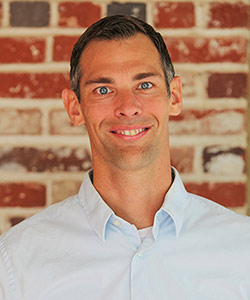
Dr. Thomas J. Bussen
Dr. Thomas J. Bussen, with a Doctorate of Business Administration, a JD, and an MBA, is a professor of international business at the African Leadership University in Rwanda and a cross-cultural management coach. He is the author of several cross-cultural books, including Shaping the Global Leader (2019), from which this article is excerpted. He is also the author of The Rising Tide: A Neo-Collectivist Critique of American Individuality (expected, 2022), which makes the case for a more inclusive and globally minded professional ideology.
By Simona Scarpaleggia
Some weeks ago, I was invited to take part in a panel debate. Being very familiar with such events, I asked what the seating arrangements would be and was told there would be high stools. Since I am rather petite, I didn’t much like the idea of having to clamber up onto a high seat, with my legs dangling over the edge like a ventriloquist’s dummy—without the ventriloquist!
A conversation to that end took place, and the organizers replaced the stools with comfortable armchairs, and everything went off smoothly.
In this example, the decision to choose high stools was probably taken by an individual who unconsciously expected most of the panelists to be men, and therefore of a certain height. It is unlikely that they took into account that women are on average much shorter than men, or that a man or woman from Mexico or Vietnam is typically much shorter than someone from the United States or Western Europe. I also doubt whether they had considered what people might wear—a high stool might not be appropriate for a woman in a skirt. And I very much doubt they considered whether any of the panelists had mobility issues.
The point of telling you this story is that it is an example of unconscious bias, and the influence unconscious bias has on our attitudes and behaviors toward other people. It can influence key decisions in the workplace and can contribute to inequality, especially in terms of recruitment, appraisals, or promotion.
PILOT’S PROGRESS
Unconscious bias is nothing new. Back in the 1940s in the UK, newly built aircraft were ferried from the factories to their frontline squadrons by pilots of the Air Transport Auxiliary, many of whom were women. There is a famous story of one enormous four-engine aircraft landing at an airfield where a party of men waited to greet the pilot. When a very petite young woman clambered out the back, the men remained standing, refusing to believe that she could have flown such a mighty aircraft, or any aircraft for that matter. Only after some time, and when no one else emerged, did they finally believe she must have been at the controls.
In more recent times, a woman in the United States recounted her experience parking in a Veterans and Military parking spot. As she got out of her car, she was confronted by a man who shouted, “That spot is for vets, ya know!”
“I know,” she replied. “It’s nice to be appreciated. Women have been serving for decades!”
Unconscious bias manifests itself in other ways that impact our daily lives. A study by two Dutch scientists at Maastricht University in 2015, for example, found that most offices set their thermostats based on the resting metabolic rate of a 40-year-old man. This is done in accordance with standard indoor air-conditioning guidelines that date back to the 1960s and have never been updated. Because women tend to be smaller and have more body fat than men, they have slower metabolic rates. Which means current air-conditioning standards are too cold for most women.
CATEGORIES OF BIAS
To be clear, unconscious bias is not limited to gender. It also arises in relation to ethnicity and other visible diversity characteristics such as height, body weight, and even names. Our brains unconsciously make quick judgments and assessments that are influenced by our background and personal experiences, as well as our concept of societal stereotypes.
Typically, bias falls into one of four categories:
AFFINITY BIAS
This is a bias in favour of people we like and immediately identify with. It often manifests itself in recruiting where we favor a candidate we see as the right “fit,” when actually, we should value diversity and consider what a particular individual will bring to the team.
CONFIRMATION BIAS
Having perhaps decided to recruit an individual in our own image, we then seek to confirm that we have made the right choice by looking for information that supports our decision and ignoring information that doesn’t quite fit the narrative we have formed. This can, of course, lead to challenges down the road if we choose to overlook an issue that subsequently becomes a problem.
THE HALO EFFECT
The halo effect comes when our positive perception of an individual makes us see everything he or she does as great—effectively giving our chosen candidate a halo. This can be dangerous and mean that we ignore other aspects of an employee’s character or performance that could become an issue, or that we fail to pay attention to formal appraisals.
THE HORN EFFECT
The horn effect is the direct opposite of the halo effect. Instead of only seeing the good in someone, we only see the bad, and focus on their negative traits.
ELIMINATING THE BIAS BY “UN-BIASING” THE PROCESSES
So, in management, how can you address the issue of unconscious bias and learn to make the right decisions for your colleagues, your business, and you?
The key point is one of being honest with yourself, which is not always easy. We all know of examples over the years where we may have had favorites or championed one individual over another. To address unconscious bias, it is essential to recognize and understand which biases you may have, because of your experience, your gender, your sexual orientation, and your own social background. Discussing the issue in an honest and open forum and raising one’s awareness of unconscious bias is the best way of starting to mitigate against it.
This will certainly help from a personal point of view, but it won’t mean that bias will disappear. Indeed, quite the opposite. Leaving the issue of bias to a myriad of individual considerations and preferences serves to fuel the subjectivity of decision-making, and in no way contributes to a structured process. The best way to create a more effective, sustainable solution, is to un-bias the process.
This means that when hiring, promoting, assigning projects, or even organizing the seating at a conference, an organization needs to have a proper process that is designed to be neutral, and takes into account how we all differ.
Let me give you some examples:
- Use gender neutral language for recruitment advertisements and other communications: by doing this, you will attract more candidates and encourage wider engagement.
- Make the application processes transparent: remember that potential candidates also have their own biases, and by having a clearer picture of the process, they will realize that they will not be excluded because of some aspect of diversity they embody.
- Require a gender-balanced shortlist of candidates for hiring and promotion: this will help safeguard meritocracy and secure equity.
- Promote in groups: promoting in batches as opposed to announcing promotions on a one-by-one basis will make gender balance more visible. It will make leaders more aware of the decisions they are making and increase trust among employees.
- Pay for performance, not for face-time: the pandemic has shown that the latter was heavily overvalued and that performance can be measured more objectively through relevant quantitative KPIs and qualitative parameters, rather than simply being seen to be working.
- Show more diverse role models: it is a very powerful way to encourage everyone to lean in and aspire to an interesting career in their organization.
The list could continue. There is so much that can be done that will help an organization to create a more equitable workplace and a more effective one too.
Being aware of unconscious bias will open a new world of opportunity to you and your business. It is not simply about ensuring that you lay out the right furniture the next time you’re hosting a conference or panel debate, but rather that you’re ensuring that you enrich your organization with a more diverse team, with all of the benefits that will bring.
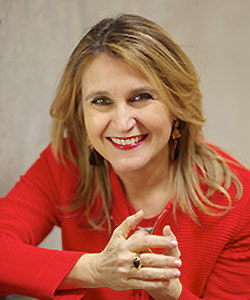
Simona Scarpaleggia
Simona Scarpaleggia is a Board Member of EDGE Strategy, which is a global leader in Diversity, Equity & Inclusion (DE&I), providing organizations with an integrated SaaS-based DE&I solution – EDGE Empower – which brings the power of the latest tech, expert knowledge and experience, and independent verification and certification into a single solution. Simona has more than four decades of experience in FMCG and Retail, she is a former CEO of IKEA Switzerland, and a former co-chair of the United Nations (UN) High Level Panel on Women´s Economic Empowerment. Simona is a mentor and author, and a regular panelist and speaker, making the case for investing in DE&I and the benefits of improving gender and intersectional equity in the workplace.
By PDJ
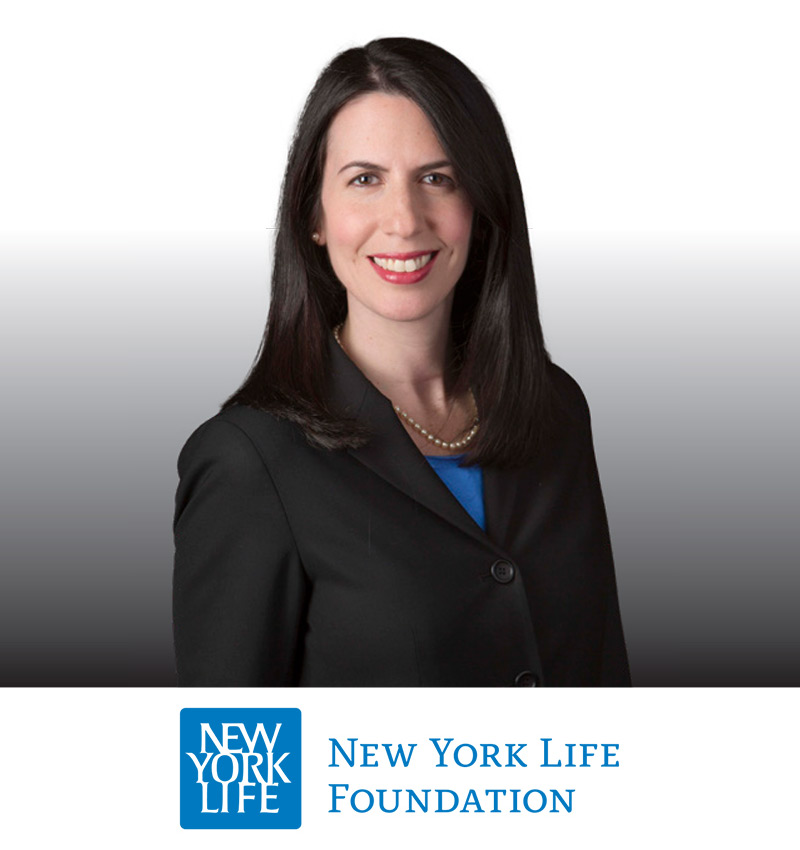
“While the New York Life Foundation can’t change the entire system alone, we can fund ideas that could lead to larger systemic change,” says Heather Nesle, president of the New York Life Foundation and senior vice president of New York Life’s Corporate Responsibility. The charitable arm of America’s largest mutual life insurer, New York Life Foundation recently formalized its third focus area, social justice. This new pillar joins the Foundation’s already established pillars of childhood bereavement support and educational enhancement for middle school students.
In the following Q&A, Heather Nesle discusses the addition of the social justice pillar in depth, and provides important context, background, and processes underlying the Foundation’s grants and explains how this new pillar will increase its overall impact.
PDJ: Previously, the New York Life Foundation has provided grants and initiatives that serve underrepresented communities through your childhood bereavement and educational enhancement for middle school students focus areas. Why is the Foundation formalizing a third focus area of social justice now?
HN: At the New York Life Foundation, we want social justice to be top of mind and woven into everything we do. That’s why we’ve recently announced a commitment to invest $15 million in social justice organizations and programs by 2025. The addition of this third focus area allows us to have more flexibility outside of education and childhood bereavement to further align with our larger social justice ambition across New York Life. While we have certainly launched programs and initiatives in the past that helped address social justice-related issues, they fell under our established focus areas. Creating a separate pillar for social justice allows us to be more intentional in our approach to grantmaking in this space, which is outside of our longstanding focus areas of childhood bereavement and educational enhancement for middle school students.
Furthermore, solidifying the social justice pillar of the Foundation expands our reach and allows us to support historically underserved communities beyond just youth. For example, we recently created a partnership with Historically Black College and University (HBCU) Hampton University to provide assistance to students in the area of bereavement. As many students may not have the means to travel home to mourn the loss of a loved one, we sought to address this need by creating a funding pool to help them travel home or to a memorial service. To further relieve the financial burden experienced by students who’ve lost a family member or their primary provider, and ensure they can continue their higher education, we also dedicated funds to cover textbook purchases and similar educational expenses for these students.
We have also partnered with the school to provide workshops for students facing loss, linking them to resources across campus and giving them the space to express what they’re feeling and receive support. We’re looking to replicate this work at other HBCUs so that the loss of a loved one isn’t a reason for students to put their academic careers on pause or abandon them entirely.
PDJ: How does the Foundation define social justice? What’s the problem you’re looking to solve?
HN: For us, social justice involves working with organizations that advocate for equal rights and access across all populations, especially the historically overlooked communities that we’ve been targeting through our grantmaking efforts. We’ve been drawn to legal defense organizations that champion equal rights, access to information, and advocacy work, and are looking to educate and effect change within the confines of the law. That’s what helps shape and start to define that larger social justice pillar.
We also look for ideas on how to engage in this space from our own employees, agents, and policy owners to deeply consider what we’re doing and how we’re influencing equal rights for women, communities of color, individuals with disabilities, and those who are LGBTQ+.
Racial equity, more specifically creating generational wealth, is a focus for the company and has been for quite some time. From a philanthropic standpoint, we can try to make investments that will help to close the large demographic gap in generational wealth. New York Life has an opportunity based on our products and services to help start to shrink that gap. With one of the most diverse field forces in the industry, we can provide holistic advice and guidance about financial planning at an early age, as well as how life insurance can support future generations.
PDJ: The Foundation’s monetary investments are laudable, but where else is the New York Life Foundation creating impact?
HN: When we think about impact, we ask ourselves: How do we focus in on an aspect of an issue we care about, that may not be widely served? And, looking at it in a systemic way, how do we find pieces within that system to tackle—that can start to affect the larger issue and truly make a difference? What can we do that is groundbreaking or creates a good example? Our work in bereavement offers several examples.
Currently, there aren’t any true systems in place to identify youth who may have lost a caregiver and need resources and support. Most children who lose a parent are owed Social Security survivor benefits, but very few receive them, which is a large monetary loss for families that can certainly use the funding. Through convening our partners and working with local agencies in different parts of the country, we’re ideating and brainstorming ways to create systemic approaches to better reach youth who desperately need these resources. While our actions may vary grant-by-grant, we are always aiming for long-term impact.
In another example, we partner with Judi’s House/JAG Institute, a community-based nonprofit that provides therapeutic grief services for children and their adult caregivers, and conducts community-based research. We funded their Childhood Bereavement Estimation Model (CBEM) that uses data to identify demographics and populations of youth with the highest incidence of loss across all geographies in the United States. Bereavement centers across the country can then use that data to help understand which groups need the most support, and develop strategies to better reach these children.
Beyond grantmaking, through this new pillar, we are also aiming to amplify capacity support for Black, Indigenous, people of color (BIPOC) leadership and nonprofits; developing inroads with nonprofits that can provide training and even job placement; increasing the diversity of the Board of the Foundation; and piloting a program with our HR partners to place mid-level, high-performing New York Life BIPOC employees on boards of nonprofits to give them more leadership experience.
Additionally, in tandem with our company’s emphasis on generational wealth, we have been working with the Schomburg Center for Research in Black Culture for over 20 years. Of note, we are now working to support the library in digitizing numerous ledgers and records, so that people can more easily access and research their own familial ancestry and history. We’re also working with the International African American Museum that’s opening in January 2023 in Charleston, South Carolina, supporting their Center for Family History and genealogy efforts.
We try to make a difference with what we have and be as efficient as we can be. We approach our grant giving holistically. We’ll bring our data scientists, our technology team, our volunteers, and our employees—the full breadth of our skills and resources—to understand the untapped areas, identify the underlying issues, educate our populace, perform skill-based volunteering, and create sustainable solutions.
PDJ: What do you hope to learn by creating this pillar and partnering with organizations to support racial equity? What do you hope others will learn from the Foundation as a result of doing this work?
HN: As with everything we do, we’ll approach this space in a way that is authentic to New York Life and to our Foundation. I hope that we meet new engaging and innovative partners that we can support along the way, and I expect, as with our other established pillars, this pillar will become an all-encompassing focus for us.
This way we can continue to utilize all New York Life resources to create sustainable and scalable solutions to often-overlooked issues that disproportionately affect underserved communities. There’s a lot that can be accomplished here, and we’re excited to learn from and partner with others to make a real difference.
Read more about the New York Life Foundation’s social justice efforts here and here, and New York Life initiatives related to DE&I and social justice, including the company’s $1 billion impact investment initiative to help address the racial wealth gap, here. New York Life’s2021 Diversity, Equity & Inclusion Report can be found here.
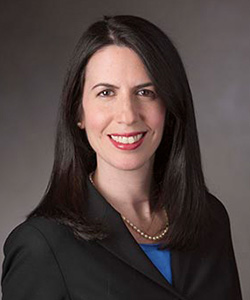
Heather Nesle
Heather Nesle is president of the New York Life Foundation, the charitable foundation created by New York Life Insurance Company. In addition to her Foundation duties, she is senior vice president of New York Life’s Corporate Responsibility Department.
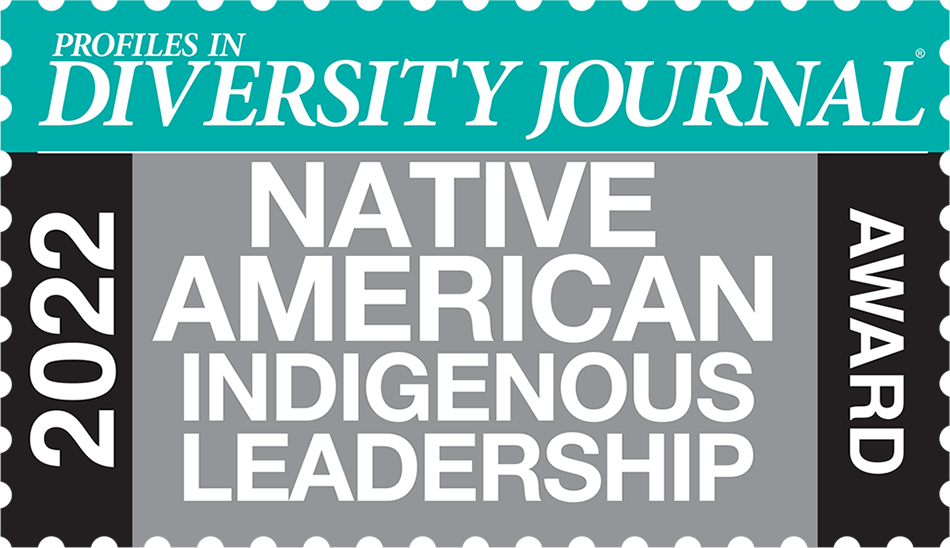
The 2nd Native American/Indigenous Leadership Awards PDJ Salutes its Newest Class of Native American/Indigenous Leadership Award Winners
For more than two decades, Profiles in Diversity Journal has honored outstanding individuals who have forged new paths, overcome challenges, mentored others, advanced diversity and inclusion in the workplace and the community, and excelled in their chosen professions. Again this year, PDJ is honoring Native American/Indigenous leaders with our second annual Native American/Indigenous Leadership Awards.
The profiles that appear in this issue recognize and celebrate the talents, hard work, and impressive achievements of the Native American/Indigenous Leaders we honor in the following pages. Each award recipient provided us with the answers to some interesting questions, along with an essay, that will give you, our readers, a chance to get to know these multitalented and trailblazing individuals a little better.
Welcome to PDJ’s second Native American/Indigenous Leadership Awards.
2022 Native American/Indigenous Leadership Award Winners
- Akin Gump Strauss Hauer & Feld LLP – Allison C. Binney – Partner
- Brownstein Hyatt Farber Schreck – Sarah Murray – Shareholder
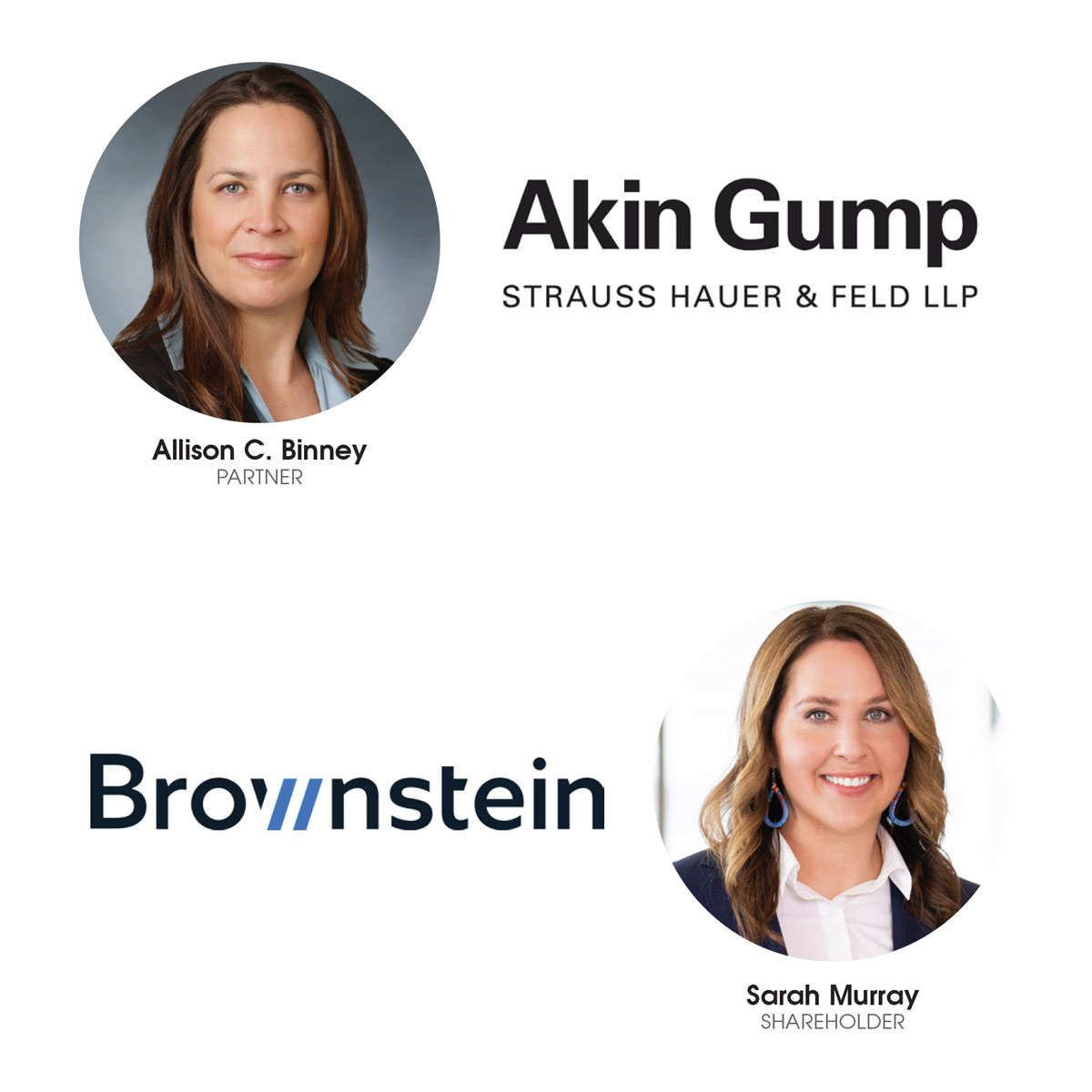
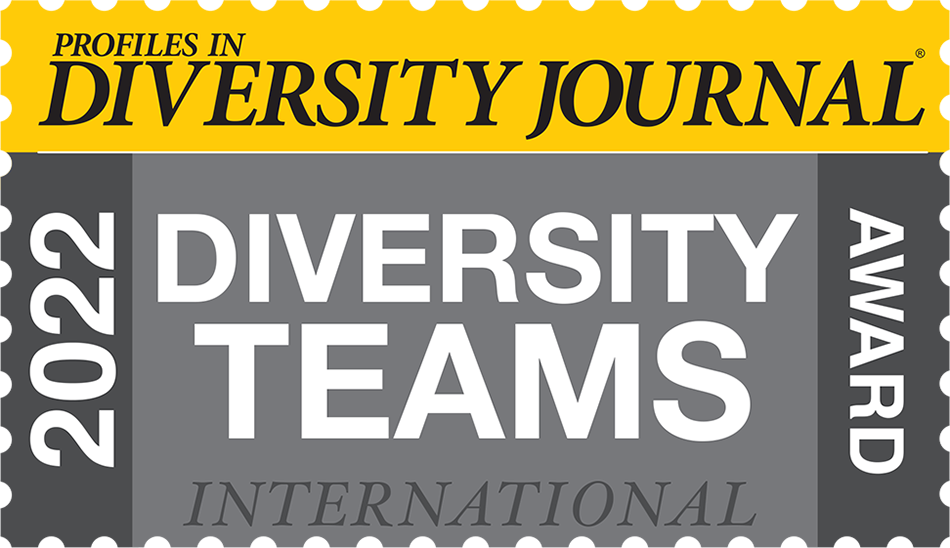
Celebrating this Year’s Very Impressive Diversity Teams
PDJ is proud to honor Diversity Teams—groups of dedicated individuals who come together to develop the strategies, create the programs, launch and manage the initiatives, and reach out to all employees to ensure that diversity, inclusion, and equity remain central to the growth of an open and welcoming workplace.
The Diversity Teams Award recipients we showcase in the following pages use their talents to reach out to an ever-expanding variety of potential hires, vendors, clients, and communities. Diversity, inclusion, and equity are central to everything they do. For many Team members, who at one time or another have felt excluded or ignored because they belonged to a particular gender, or ethnic or cultural group, making diversity a reality is a personal imperative.
This year’s Award recipients are also teaching company leaders and hiring managers to recognize and confront their own biases. Most important, they are cultivating workplaces that invite all employees to bring their authentic selves to work every day.
We invite you to get to know these extraordinary Diversity Teams. You may discover ideas and strategies you can use to help create a more open, welcoming, and successful workplace. And we know you’ll be inspired by their enthusiasm and commitment.
2022 Diversity Team Award Winners
- Ally Financial – Diversity, Equity and Inclusion Team – Reggie Willis
- Best Best & Krieger LLP – Best Best & Krieger Diversity, Equity & Inclusion Committee – Chief Talent Officer Danielle Sakai
- Milbank LLP – Milbank LLP Diversity Group – Mikeisha Anderson Jones, Chief Diversity, Equity and Inclusion Officer
- Washington Capital Partners – Washington Capital Partners – Giselle Bonzi
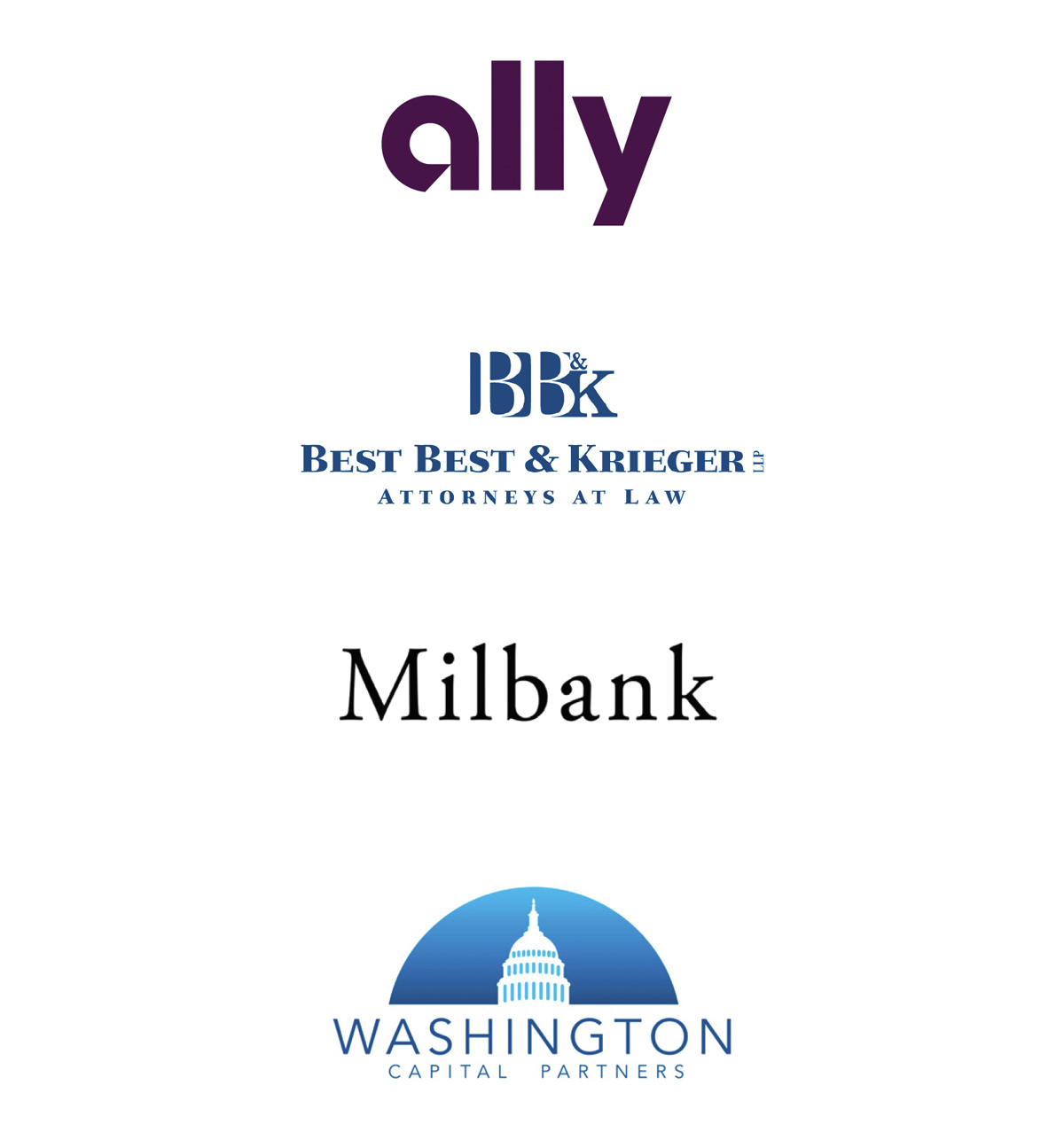
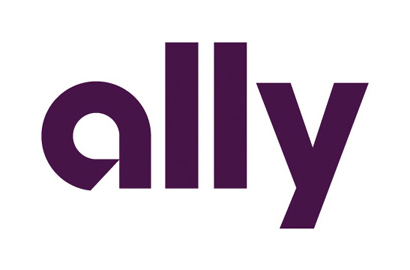
Company: Ally Financial
Diversity Team Name: Diversity, Equity and Inclusion Team
Diversity Team Leader(s): Reggie Willis
Website: www.ally.com
What Makes this Diversity Team Stand Out
At Ally, diversity, equity and inclusion are essential parts of who we are and who we want to be. Our DE&I team underscores the importance of these values to our culture through a range of programs, initiatives, and materials that represent the core of Ally’s foundation. The team has taken purposeful steps to weave DE&I through our human capital efforts, from pipelining candidates and onboarding, all the way through the employee lifecycle. Through their unwavering work, the team has helped our 10,000+ employees understand that a diverse, equitable, and inclusive workforce makes us all stronger, more agile, more innovative, and more adaptable. In short, their work makes Ally better in all aspects—financially, operationally, and culturally.
The DE&I team’s work is consistently reinforced by executive leadership through messages during town hall meetings and employee communications. The team’s reach and influence are proven through Ally’s high level of employee resource group (ERG) participation. Approximately 43 percent of Ally’s employees belong to at least one ERG representing various dimensions of diversity, including Black/African American ALLYs and Pride ALLYs. The DE&I team provides the ERGs the support and guidance needed to develop interactive, engaging, and educational experiences for all employees, including securing prominent speakers like civil rights icon Ruby Bridges and Emmanuel Acho, author of Uncomfortable Conversations with a Black Man, to generate vital discussions.
The DE&I team also is instrumental in Ally’s efforts to promote a diverse workplace. In 2021, Ally had an 85 percent retention rate for women and people of color, and 36 percent of women or people of color were promoted or moved into new roles to advance their careers.
Understanding that the path to economic mobility starts best when it starts early, the team plays a significant role in the company’s Moguls in the Making program and its involvement in the University Growth Fund (UGF). Through Moguls, HBCU students are tasked with creating and pitching a business proposal to a panel of executives. Students receive professional mentoring and compete for scholarships and paid internships. Since the launch of the Moguls program in 2019, Ally has hired 36 interns, with 12 interns being offered full-time positions.
UGF is an innovative, student-led venture-capital fund that provides capital to small business, while giving college students real-world experience in private equity investing. Ally’s team was instrumental in expanding the program to Atlanta last year to provide a greater number of diverse students access to the program to launch careers in venture capital.
There are many drivers that unite our company under the “One Ally” culture: our passion for our customers; our commitment to making a meaningful and positive impact on our communities; and our relentless focus on delivering results and “Doing It Right.” The DE&I team is critical to helping Ally embrace and celebrate our differences, so all employees can be their best. As a direct result of this team’s determination and efforts, Ally is better positioned to achieve its strategic objectives and drive value for associates, communities, and shareholders.
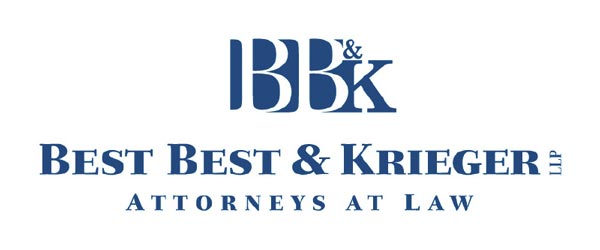
Company: Best Best & Krieger LLP
Diversity Team Name: Best Best & Krieger Diversity, Equity & Inclusion Committee
Diversity Team Leader(s): Chief Talent Officer Danielle Sakai
Website: www.bbklaw.com
What Makes this Diversity Team Stand Out
Best Best & Krieger has a long history of diverse makeup and inclusive culture, which today is formally bolstered by BB&K’s active Diversity, Equity & Inclusion Committee. Spearheaded by partners Sonia Carvalho, Mrunal Shah, Alisha Winterswyk, and Chief Talent Officer Danielle Sakai, the committee and its Firm Culture and Community Outreach subcommittees facilitate ongoing opportunities for BB&K’s attorneys and staff to learn, champion, and candidly discuss relevant DEI topics. Some of the firm’s 2022 initiatives include:
- Black History Month observance, which included a “Journey to the Bench” Black judges panel, cooking class with the New Orleans School of Cooking, Black History Month trivia night, and daily “On this Day in Black History” emails
- Women’s History Month observance, which included “BB&K Women Pioneer” tributes
- Volunteer Month observance, which included a volunteer spotlight series and regional volunteering resources
- Asian American & Pacific Islander Heritage Month observance, which included a roundtable with San Diego State University professor and San Diego Asian Film Festival Director Brian Hu, a “Stopping AAPI Hate” roundtable with AAPI Equity Alliance Managing Director Candice Cho, and cooking class with BB&K’s Anya Kwan
Additionally, over the past several years, the firm has hosted roundtables, workshops, and training sessions on gender bias, law enforcement and racial tensions, Hispanic heritage, the Americans with Disabilities Act, LGBTQIA history and importance of pronouns, the intergenerational workplace, and more.
To enhance firm recruiting and professional development, BB&K’s Recruiting Committee works in tandem with the DEI Committee to recruit, hire, retain, and promote minority and underrepresented attorneys and staff. BB&K’s detailed core competencies plan incorporates important aspects of diversity training and procedures to ensure associates are well rounded, hone their talents, and contribute to the firm and community in meaningful ways.
BB&K also works to foster interest in legal careers among diverse student populations with programs such as a Law 101 event for student members of Senator Connie Leyva’s Young Senators Program. The firm recently expanded its already robust Summer Associate Program to include on-campus interviews at several historically Black colleges and universities, and this year, launched the annual Arthur Littleworth Diversity Scholarship, which will provide an incoming college freshman interested in a water law career with $10,000 in funds. For over a decade, BB&K has also held a Diversity Fellowship/Scholarship Program, which provides a $7,500 paid summer associate position with BB&K.
BB&K’s attorneys are often invited to present at external diversity events, and the firm annually receives high marks nationally for diversity, most recently these:
American Lawyer’s Diversity Scorecard
- #12 Overall
- #6 for Percentage of Minority Equity Partners
- Law360’s Diversity Snapshot (101-250 attorneys category)
- #6 Overall
- #4 for Percentage of Minority Equity Partners
- #9 for Percentage of Minority Associates
National Law Journal
- #13 on Women in Law Scorecard
BB&K is proud of its progress in diversity and inclusion, but recognizes there is more work to be done. The bedrock principle of the legal system is that everyone must be treated equally under the law. The firm celebrates DEI successes, but remains committed to continual improvement.
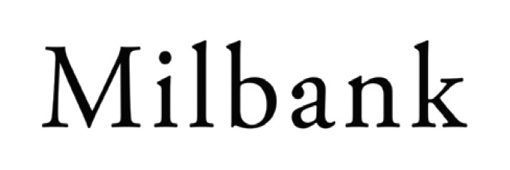
Company: Milbank LLP
Diversity Team Name: Milbank LLP Diversity Group
Diversity Team Leader(s): Mikeisha Anderson Jones, Chief Diversity, Equity and Inclusion Officer
Website: www.milbank.com
What Makes this Diversity Team Stand Out
Milbank LLP has embedded diversity, equity and inclusion (DEI) in the fabric of the firm, from recruitment and professional development to work/life integration and commitment to community. We hire and support lawyers and business professionals across broad dimensions of diversity, bringing different perspectives that benefit our firm and our clients.
Recruiting
Our commitment to DEI is demonstrated by our approach to recruiting of underrepresented groups, including the following:
- Our sponsorship of underrepresented law student and professional bar associations, support of early access programs, and involvement in national diversity initiatives.
- Members of our DEI and Women’s Initiative (WI) committees serve as hiring partners, ensuring that our ideals are integrated at the very core of the firm.
- Our resource groups (more below) also take an active role in the recruitment of law students from underrepresented backgrounds. This includes building relationships with diversity organizations at law schools and supporting the pre-law school pipeline of undergraduates through engagement, mentorship, and our Diversity Fellowship Program and Diversity Scholarship Program.
- Milbank also sponsors campus outreach events, where we connect with LGBTQ+ law students, including participation at the annual Lavender Law Conference.
Inclusion and Growth
We invest in our people through a range of resource groups and innovative programming. These groups offer leadership, networking, and mentoring opportunities that help launch and build enriching careers. Our affinity groups include these:
- aADAM (Attorneys of African Descent at Milbank)
- APIN (Asian Pacific Islander Network)
- LaMano (Latinx Mentoring and Networking Organization)
- Parenting Group
- Pride (LGBTQ+ Affinity Group)
- Women@Milbank
We also support several regional focus groups in London, Los Angeles, and Washington, DC.
Milbank’s DEI Learning Initiative offers an engaging, global curriculum to everyone at the firm. The program addresses vital topics, such as understanding unconscious bias, leading inclusively, and creating an inclusive culture.
Milbank offers lawyers an opportunity to participate in our Career Development & Coaching Program and our highly regarded Milbank@Harvard program, which include diversity and inclusion modules. In addition, our WI Committee sponsors leadership, networking, and client development workshops, as well as our Self- Advocacy Program for junior women associates.
Additional Highlights
In addition to our award-winning pro bono program, which focuses heavily on social justice work and correcting inequities in our criminal justice system, Milbank is regularly recognized as a DEI leader in the legal space. The following are examples of such recognition:
- Since 2010, Milbank has held a top 30 rank in The American Lawyer “Top Law Firms for Diversity Scorecard.”
- The firm achieved a perfect 100% score on the Human Rights Campaign Foundation’s 2022 Corporate Equality Index and was designated a “Best Place to Work for LGBTQ+ Equality.”
- We were selected as “Best international firm for work-life balance” by Euromoney Americas
- Milbank proudly observes the Juneteenth holiday in the United States.
Through our DEI initiatives, we are building an inclusive environment where the individual differences among us are understood, respected, and appreciated; recognized as a source of strength for the firm; and valued as qualities that enrich the environment in which we work.
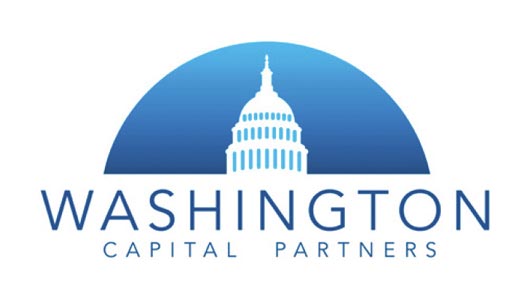
Company: Washington Capital Partners
Diversity Team Name: Washington Capital Partners
Diversity Team Leader(s): Giselle Bonzi
Website: www.washingtoncapitalpartners.com
What Makes this Diversity Team Stand Out
Washington Capital Partners (WCP) should be recognized as a 2022 Outstanding Diversity Team because of all its innovative efforts in the hard-money lending industry. Since 2018, the company has greatly increased its efforts to hire diverse team members, as well as increasing leadership opportunities for women and minority professionals at the company. Today, women make up 52 percent of WCP’s staff, and minority employees make up 65 percent. Through mentoring programs, women and minorities represent 50 percent of the leadership team.
While WCP focused on increasing diversity internally, the company also carried out initiatives that offer more opportunities for women and minority clients, with products designed just for their needs. Similarly, in 2020, the company created The WCP Foundation, which was born of a long-time dream to contribute to the community, not only through the work that WCP does, but also with the profits from its efforts. Since its inception, The WCP Foundation has focused on initiatives that create systemic changes, while addressing social and economic inequalities, such as immigration reform, health disparities, racial inequality, economic empowerment, housing sustainability, and environmental causes.
The diversity of WCP’s team has contributed immensely to creating a culture that is inclusive, where people can thrive and do their best, while being able to bring their uniqueness to their everyday jobs. At the same time, the team’s diversity attracts and retains top talent, as people appreciate the difference of thought and the richness of conversations and outcomes that these can create. The company’s cultural diversity has helped create an environment that employees enjoy. It has also enabled WCP to achieve impressive results, as evidenced by the awards listed here:
- Financial Times The Americas’ (500) Fastest Growing Companies (2020, 2021, 2022)
- Stevie Business Awards, Minority-Owned Business of the Year (2022)
- Profiles in Diversity Journal, 2022 Latino Leaders Worth Watching (2022)
- Mortgage Professional Association, Elite Women in Mortgage (2021)
- Women Presidents’ Organization and JPMorgan Chase Commercial Banking, Women 2 Watch of 2021 (#11, 2021)
- Women Presidents’ Organization and JPMorgan Chase Commercial Banking, 50 Fastest-Growing Women-Owned and -Led Companies (#42, 2021)
- Washington Business Journal, Corporate Diversity Index–Small Companies (2019, 2021)
- Inc. Magazine, The 250 Fastest-Growing Private Companies in the DC Metro Area (#59, 2021)
- Inc. Magazine, The 5,000 Fastest-Growing Private Companies in America (2018, 2019, 2020, 2021)
- Washington Business Journal, The 75 Fastest-Growing Private Companies (2019, 2020, 2021)
- Great Place to Work® (2019, 2020, 2021, 2022)
- Washington Business Journal, 40 Under 40 (WCP’s CEO Daniel Huertas was featured as a top business leader under the age of 40 in the DC Metro Area (2019)
By Gerry Borja, Senior Diversity & Inclusion Program Manager, Oracle

We all know America’s veterans are assets to any organization. Serving in the Armed Forces imbues men and women with incredibly valuable job skills: resourcefulness, the ability to work hard under pressure, commitment, competence, discipline, advanced technical skills, and enormous reserves of grit and courage.
But military service also instills a level of modesty that can actually be a detriment to success in the private sector.
“Many veterans don’t speak out. They’re not great at patting themselves on the back or celebrating their own accomplishments. That’s not how they’re taught to do things in the military,” says Susan Christ, a diversity and inclusion veteran program manager for Oracle’s veteran program.
That cultural difference between military and civilian life is just one of several factors that challenge many leaving the United States Army, Navy, Marines, Air Force, and Coast Guard, as well as their spouses, when they look to transition to careers in the private sector.
Susan is someone who’s thought a lot about these challenges from different perspectives: as an United States Air Force veteran looking to find a job, as a recruiter responsible for hiring others, as a specialist administering local and federal government programs, and as a passionate advocate for disabled veterans. She brings insights gained from all these phases of her post-military career to Oracle, where she is now helping to expand the Oracle Veteran Internship Program (OVIP).
In 1997, after Susan completed six years of service, she found few resources available to help her transition to civilian work. She had moved back to her home town of Pittsburgh with expertise in repairing complex systems on aircraft, but with no professional network in place or experience navigating the corporate job market.
“I didn’t know what a healthy, thriving workplace should look like,” she says.
It’s important to remember that some 70 percent of job opportunities are generated by our professional networks— members of the Armed Forces typically aren’t building these networks when they are moving from base to base in service of their country.That’s why employment for veterans and their spouses still lags the general population, even though they tend to be more educated than their civilian counterparts. The Oracle Veteran Internship Program addresses this issue.
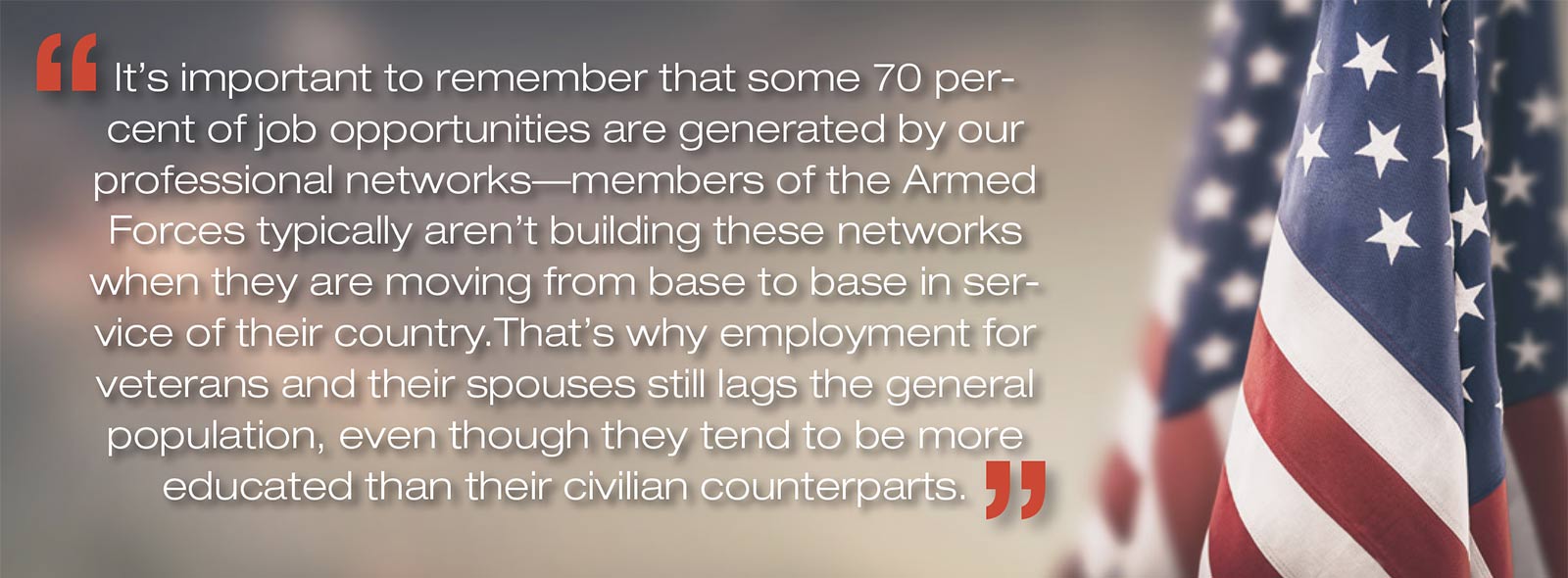
The Oracle internship “provides an opportunity to become integrated to this large culture-driven organization,” Susan tells me. “It’s about bridging the gap between the employer and the veteran, and teaching them both to speak the same language.”
Veterans or their spouses who enter the program are assigned a veteran mentor who focuses on helping them develop the soft skills needed to thrive in civilian careers, such as learning to speak the language of corporate America. Those mentors are provided through MAVEN, Oracle’s Military Affiliated Veteran Employee Network.
Oracle has recently expanded this program from 10 to 15 internships every season. Some recent graduates served stints of a couple years, others retired from the military with high rank after long careers, and still others are military spouses.
As expected with a group trained never to quit, more than 90 percent complete the program, and almost 70 percent of the interns are placed throughout our company, from software development to marketing to program management teams.
They’re people like Dan Lasche, a West Point graduate who gained valuable leadership experience, as well as a Project Management Professional (PMP) certification, in the United States Army.
Through his Oracle internship, Dan participated in a software development bootcamp. He chose to pursue that career path, eventually joining a software development team as a junior site reliability engineer. Now, as Dan continues to build out his own software development skills, he is mentoring a new hire to the team.
As the Oracle Veteran Internship Program expands, there will be more stories like Dan’s—reports of our nation’s heroes embarking on exciting new career paths.
“The internship provides opportunities I could have only dreamed of when I left the military,” says Susan.
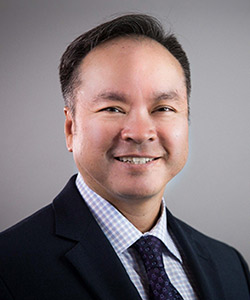
Gerry Borja
Gerry Borja is a Senior Diversity & Inclusion Program Manager responsible for engagement initiatives with Communities, Interns and Veterans at Oracle. Prior to Oracle, Gerry grew up a proud US Navy brat and also served in the US Army. Gerry has worked at all levels in HR to include operations and management. He has worked for both large corporations and start-ups in the Silicon Valley (San Jose) and San Diego.

